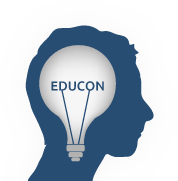How Teachers Can Co-Opt the Lean Startup Model for the Classroom
See if this problem-solving technique sounds familiar: form a hypothesis, design an experiment, measure the results, and use the findings to inform the follow-up experiment.
Science teachers might recognize that as the “Scientific Method.” Entrepreneurs have their own name for it, too: the “Lean Startup,” popularized by Eric Ries’ book of the same name, which has been canonized in the lore of entrepreneurship.
The core tenets in these two approaches are not all that different: Like any startup, a classroom must deliver services under unpredictable conditions. Like entrepreneurs, teachers continuously improvise new approaches, measure if they work, and learn from their successes (or failures) immediately. Are the students learning? What’s working? For all students, or for some?
No solution is perfect, but few emotions are as draining as finding out that a product or teaching method ultimately doesn’t work—and not knowing it until it’s too late (or at the end of the school year).
Already, the lean process is being used for new instructional approaches in places like Summit Public Schools. In fact, CEO Diane Tavenner gave a talk in 2012 on how she and her team used the method to test and refine Summit’s instructional practice. And the result? Since launching in 2003, Summit has graduated more than 1,700 students, 100% of whom meet or exceed 4-year college entrance requirements.
When it comes to teaching, being able to quickly understand whether or not your students are learning—and then adjusting your practice accordingly—is crucial to the profession. So how can educators co-opt Lean Startup methods—a series of rapid testing processes designed to test and scale businesses—to design the best possible classroom?
Conversational Practice
This "conversation" will consist of a brief description of the following article (https://www.edsurge.com/news/2015-10-28-how-teachers-can-run-classrooms-like-lean-startups), followed by a Gallery Walk activity. Groups of 3-4 participants will pair up and engage in the teacher-centric lean classroom process—together creating a hypothesis, defining metrics, and theorizing a minimum viable product that an educator could test in the classroom with students.
Conversation Links
-
Joshua SpodekNYU, Columbia University
-
Jessica RaleighDenver Public Schools
-
Matt OwenLusher Charter School
-
Mike VollmertRio School District
-
Peggy GeorgeClassroom 2.0 LIVE
-
Mary MurphyDouglas County School District
-
Keisha StephenHighland Park High School
-
John MunroRick Hansen Secondary School of Science and Business
-
Ray O'Brien
-
Michael Klein
-
Anna Thin
-
Rachel Matthews
-
-
Michael CarsonMcLean School of Maryland
-
Andrew BieronskiConsultant & Teacher - Waterloo Region District School Board
-
David BaroodyGermantown Academy
-
Alexandra Fallon
-
Penn GrowAir Academy District 20
-
Scott TottenFlemington-Raritan School District
-
Natalie WoodCrescent Elementary
-
Stephanie Casperson
-
Maanika KeesaraMastery Charter - Thomas High
-
Alexa DunnSchool District of Philadelphia
-
Laura BerdineBreck School
-
Vanessa Letourneau
-
Kyle SimonSouth Western High School
-
Rosa Mutchnick
-
Rob JohnsonTeacher at Breck School
-
Jennifer KilroyHudson High School of Learning Technologies
-
Christina MoradoOyster Adams Bilingual School
-
Christian Kunkel
-
Maria SommerRiver Vale, NJ Public Schools
-
Nancy KuThe Shipley School
-
Mark SilberbergLittle Red School House & Elisabeth Irwin HS
-
Teresa KelleyFreire Charter School
-
Jeffrey McClurkenUniversity of Mary Washington
-
Whitney HoffmanKennett Consolidated School District
-
Katharine HudsonHaverford School
-
Christopher FornaroThe Shipley School
-
Robert Dillon
-
Katrina StevensUS Department of Education
-
Deanna StephanGarnet Valley High School
-
Caroline PatrieAddison Northeast Supervisory Union
-
Ashley Doll
-
Deb Schiano
 EduCon 2.8
EduCon 2.8
No comments have been posted yet.
Log in to post a comment.